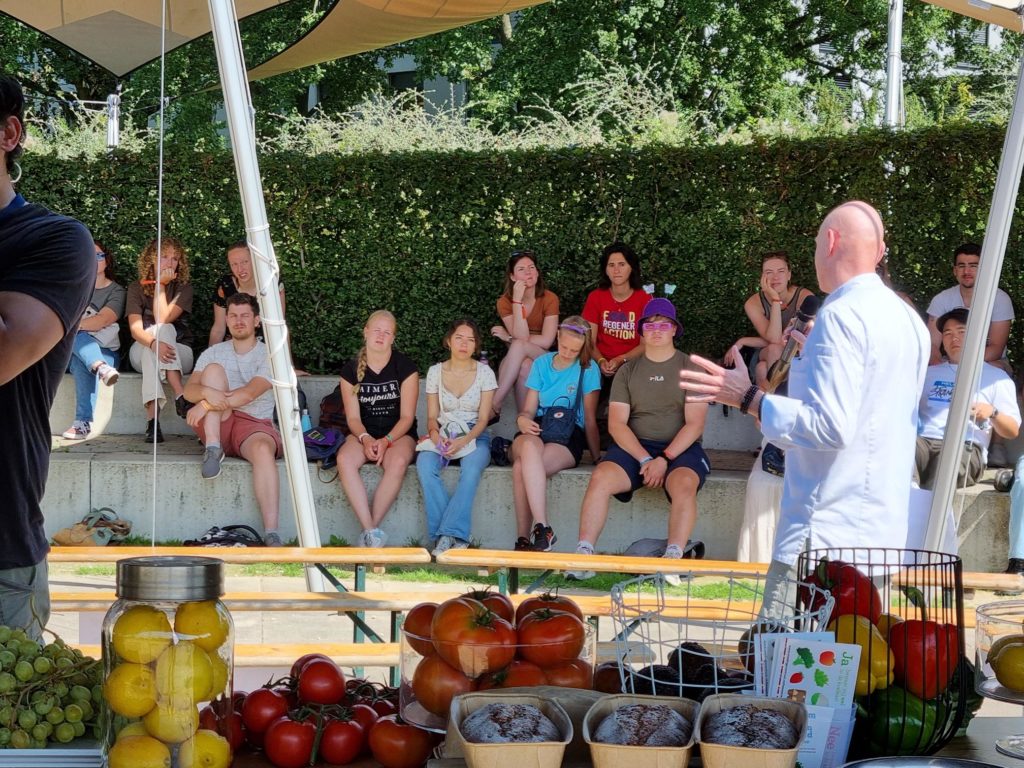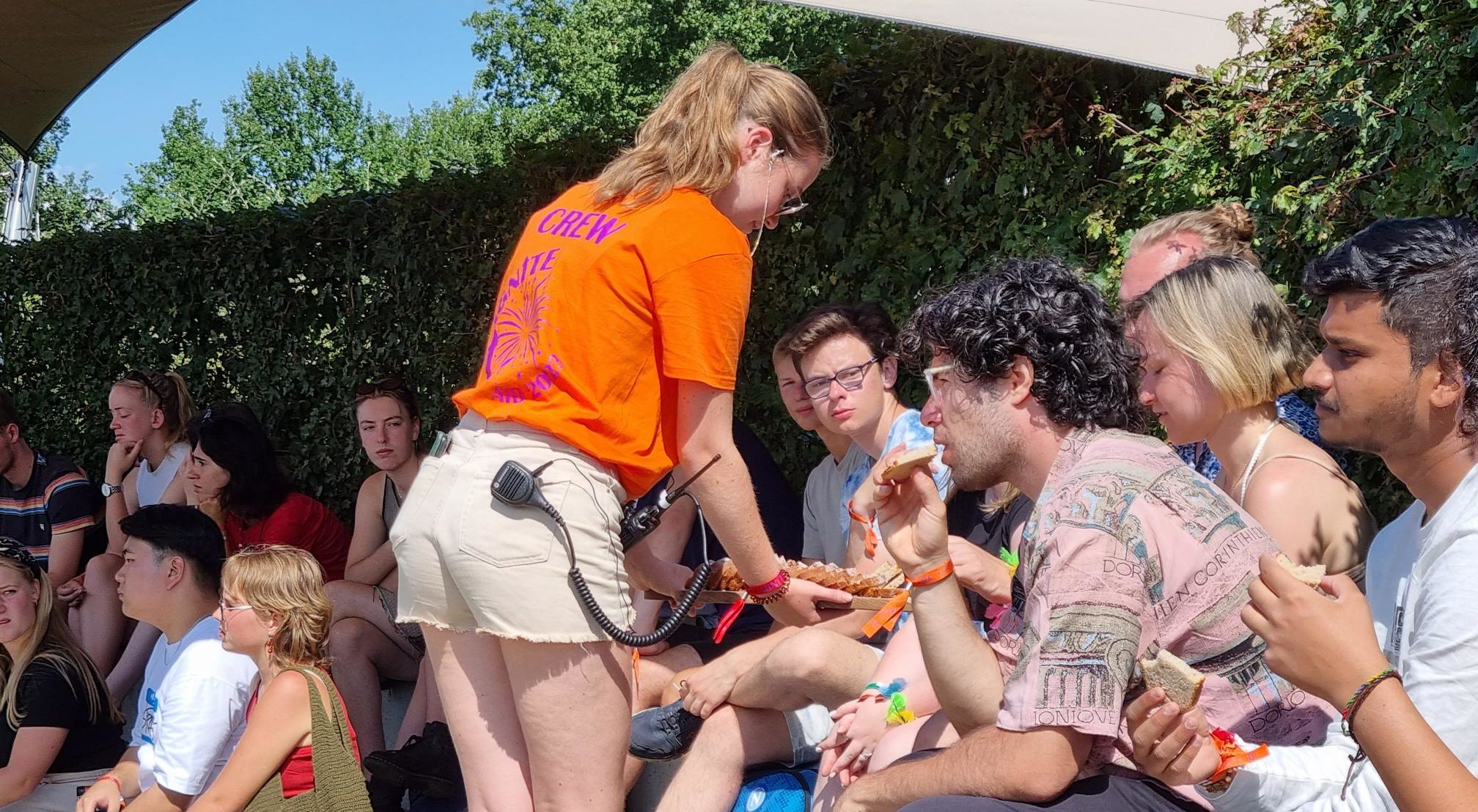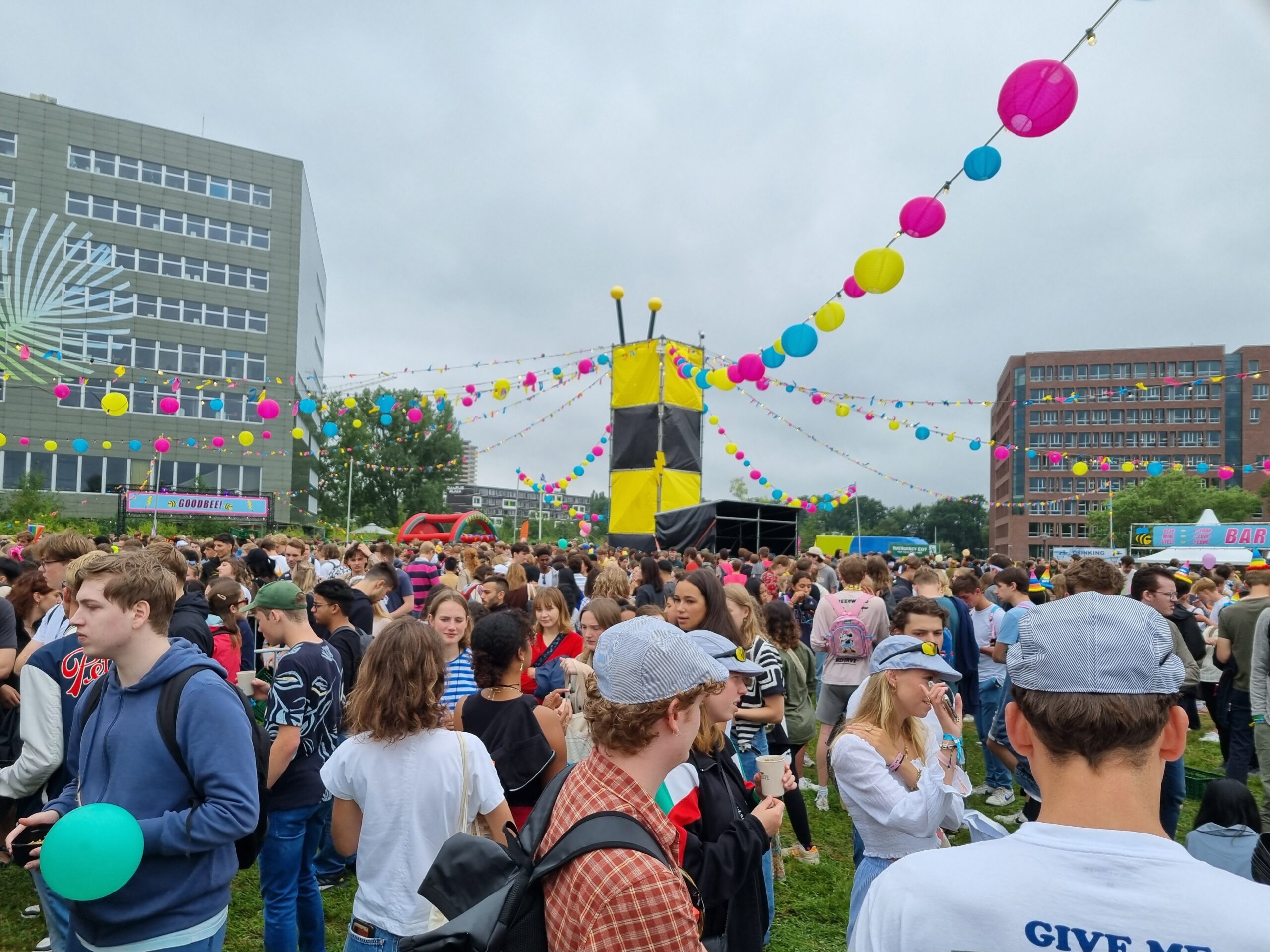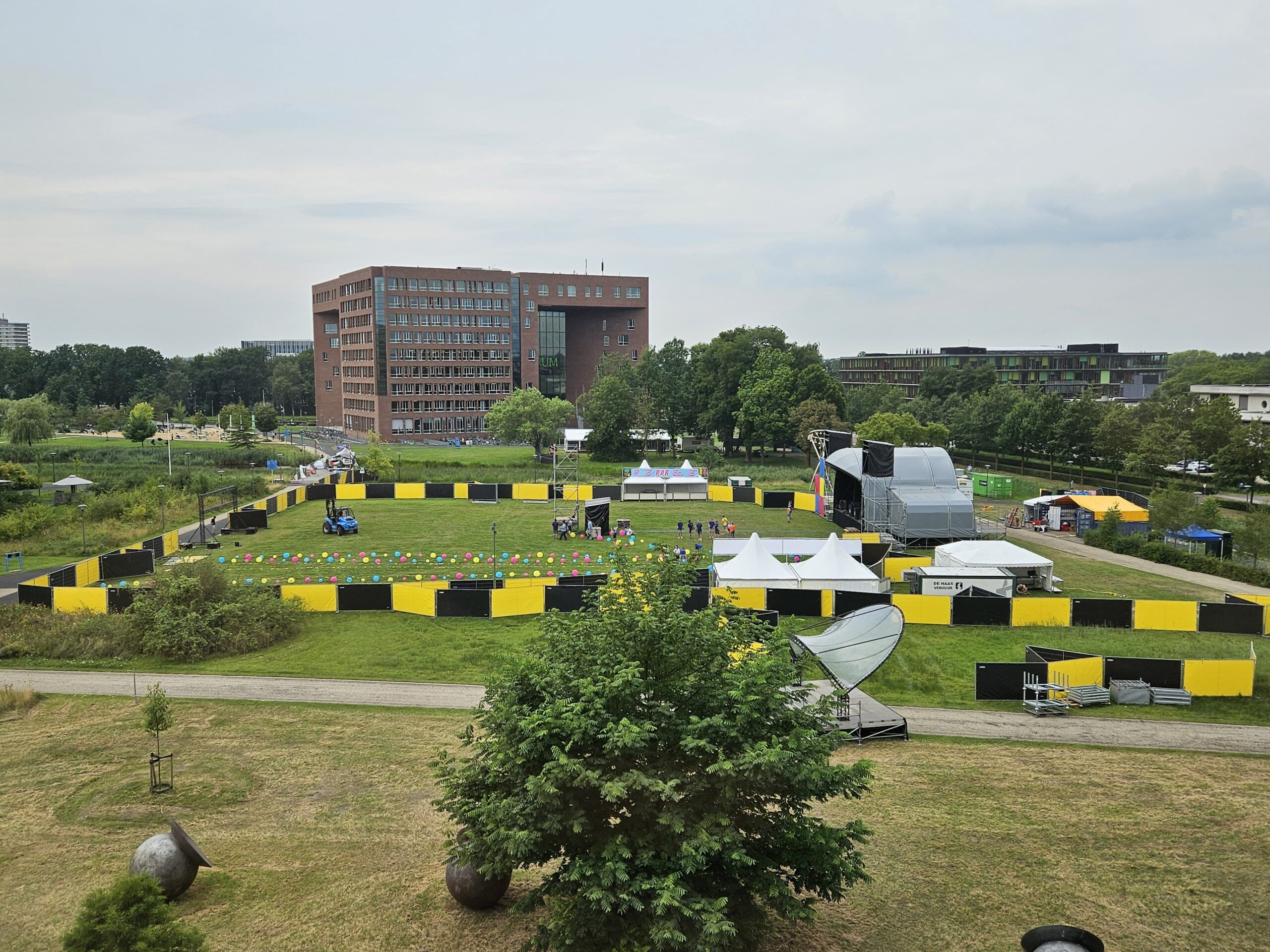How many kilogrammes of food do the Dutch discard per person per year? AID-participants in the Waste-free cooking workshop take a guess. Five kilos, says one. Ten, says another. ‘I think more: twenty’, the third suggests. All three are wrong, the correct answer is 33.4 kilogrammes. That number needs to go down, says workshop Samen Tegen Voedselverspilling (Against Food Waste Together).
AID-mom Kikken (a fourth-year student of Nutrition and Health) is enjoying the shade on the mound of the amphitheatre next to Impulse with two of her group members. ‘My student house is quite good at cooking without waste’, says Kikken. ‘We hardly ever throw anything out. There is one housemate who is particularly committed. We have leftovers days on Thursdays when the strangest things are on the menu. A wrap with spinach and cream and a veggie burger, for example. Or rice with pasta and salad. Unusual dishes, but we don’t want to throw food away and are often pleasantly surprised by the unusual combinations that emerge.’
Kikken has quite some cooking experience. ‘My favourite dish is couscous with ras el hanout, feta, cashew nuts and sun-dried tomatoes, zucchini and bell peppers. It’s easy to prepare, and leftovers are great for lunch the next day.’
Cooking schedule
The members of her AID group have less culinary experience. Joanne van Rij (18) is starting her studies in Animal Sciences and has found a room. ‘I have seven housemates. Our house has a cooking schedule for Mondays to Thursdays, as most people still go to their parents at the weekends. So I will have to cook once every fortnight. Any inspiration for the menu is welcome.’ Lisa Hommes (18) is going to study Agrotechnology. ‘I cook now and again. Simple dishes such as pancakes, pasta with red sauce and vegetables, things like that.’ Does she have any experience in waste-free cooking? ‘At home, we mostly freeze leftovers. Sometimes the dog gets them, but we don’t really throw anything away.

Fridge challenge
The workshop starts with some fifty participants. After some interactive information, including the fact that one-third of the food that is produced globally goes to waste, challenges start. Two pairs of students are asked to split a bag full of vegetables into what should be kept inside the fridge and what not. Two other students are asked to determine how much pasta to cook for four boys and four girls.
The pasta challenge is reasonably successful, although it is difficult, says one participant. ‘Boys generally eat more than girls, but still, it is difficult. There are those with a big appetite and a small appetite.’ The fridge challenge shows room for improvement, the host says. ‘Tomatoes lose their flavour in the fridge, and avocados and lemons don’t belong there either. Unless they are sliced. Apples are best kept chilled.’ A tip for the students: put a sticker on the fridge so you know what belongs there and what doesn’t. Meanwhile, Unilever chef Anton Rinsema shares tips on how to cook with leftovers. Brown bananas? Make banana bread, Stale bread? Turn it into a bread pudding. Follow social media channels on waste-free cooking and, most importantly: learn by trying.
Great reminder
Back to the participants. Have they learned anything? Kikken: ‘The amount of food that is wasted per person surprised me. Thirty-three kilos is over half my body weight in food. So, I certainly want to address that by putting a sticker on the fridge, for example.’ Van Rij: ‘I was also unaware that so much food is wasted or that apples are best kept in the fridge. So, these tips are certainly helpful.’ Hommes has learned a lot about what should and should not be stored in the fridge. ‘Avocados are always kept in the fridge at home. This is a great reminder of how to be more conscientious about food waste.’

 AID participants taste waste-free banana bread. Photo Luuk Zegers
AID participants taste waste-free banana bread. Photo Luuk Zegers 

